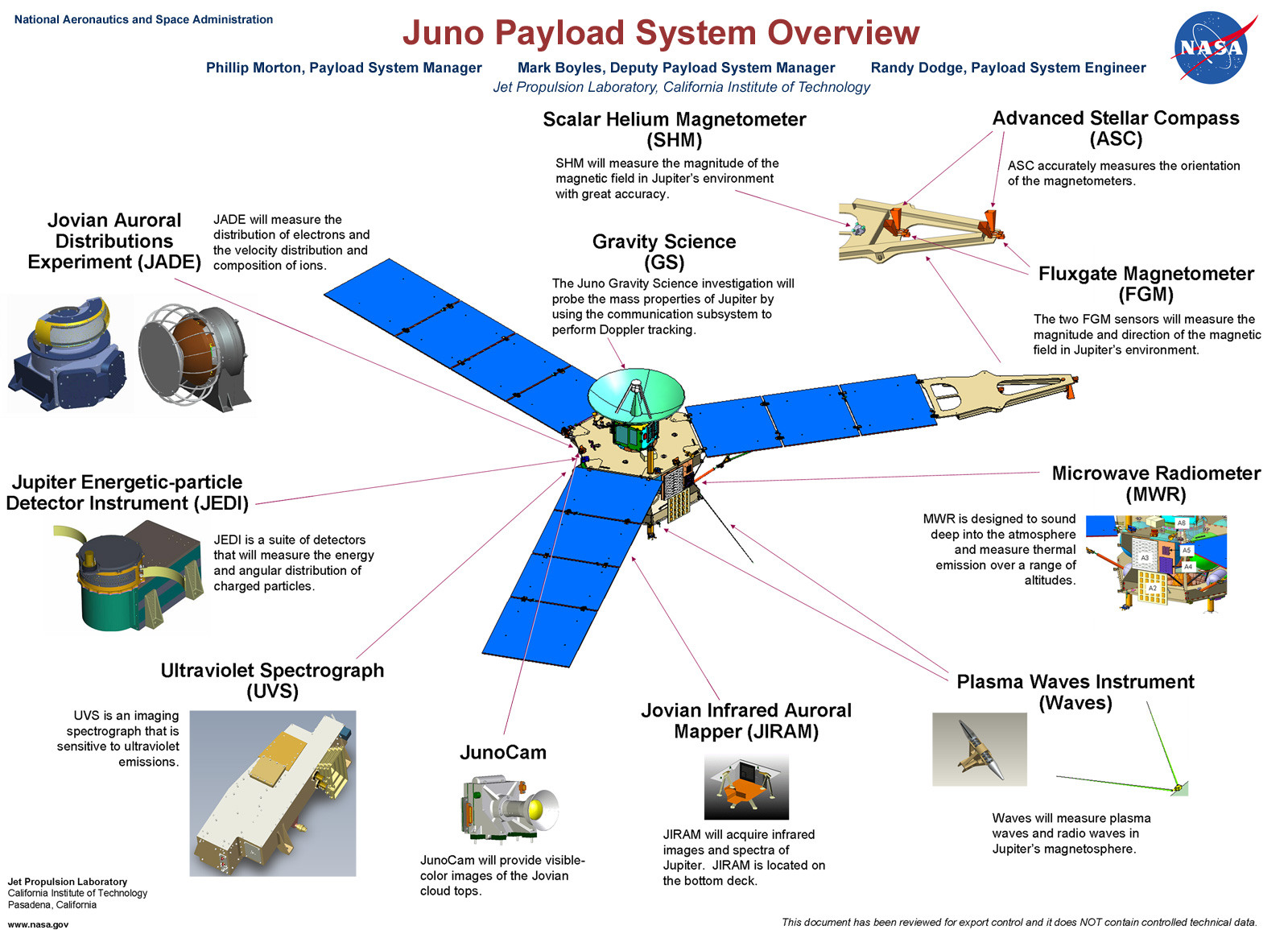NASA has decided to return to Jupiter with a mission to conduct an unprecedented, in-depth study of the largest planet in our solar system. The mission is called Juno, and it will be the first in which a spacecraft is placed in a highly elliptical polar orbit around the giant planet to understand its formation, evolution and structure. Missions to Jupiter have been on again, off again, with a mission to Europa falling during the 2006 budget cuts, and the Jupiter Icy Moons Orbiter (which would have used a nuclear reactor to power an ion engine to send an orbiter to 3 of Jupiter's moons) getting the ax in 2005. Juno has been on the table since 2004, surviving budget cuts, although the mission has experienced delays. But it looks official now, and the spacecraft is scheduled to launch in August 2011, reaching Jupiter in 2016.
Scientists say studying Jupiter is important because it hold secrets to the fundamental processes and conditions that governed our early solar system. "Jupiter is the archetype of giant planets in our solar system and formed very early, capturing most of the material left after the sun formed," said Scott Bolton, Juno principal investigator from the Southwest Research Institute in San Antonio. "Unlike Earth, Jupiter's giant mass allowed it to hold onto its original composition, providing us with a way of tracing our solar system's history."
The spacecraft will orbit Jupiter 32 times, skimming about 3,000 miles over the planet's cloud tops for approximately one year. The mission will be the first solar powered spacecraft designed to operate despite the great distance from the sun. [caption id="attachment_21453" align="alignnone" width="185" caption="Artists concept of Juno at Jupiter. Credit: NASA"]
[/caption] "Jupiter is more than 400 million miles from the sun or five times further than Earth," Bolton said. "Juno is engineered to be extremely energy efficient."
The spacecraft will use a camera and nine science instruments to study the hidden world beneath Jupiter's colorful clouds. The suite of science instruments will investigate the existence of an ice-rock core, Jupiter's intense magnetic field, water and ammonia clouds in the deep atmosphere, and explore the planet's aurora borealis.
Understanding the formation of Jupiter is essential to understanding the processes that led to the development of the rest of our solar system and what the conditions were that led to Earth and humankind. Similar to the sun, Jupiter is composed mostly of hydrogen and helium. A small percentage of the planet is composed of heavier elements. However, Jupiter has a larger percentage of these heavier elements than the sun.
"Juno gives us a fantastic opportunity to get a picture of the structure of Jupiter in a way never before possible," said James Green, director of NASA's Planetary Division at NASA Headquarters in Washington. "It will allow us to take a giant step forward in our understanding on how giant planets form and the role that plays in putting the rest of the solar system together. "
The last mission to Jupiter was the Galileo mission, which began its observations of the giant planet in 1995, made 35 orbits, and then was intentionally flown into the planet in 2003 to avoid any contamination of Jupiter's moons.
Source:
NASA
 Universe Today
Universe Today
